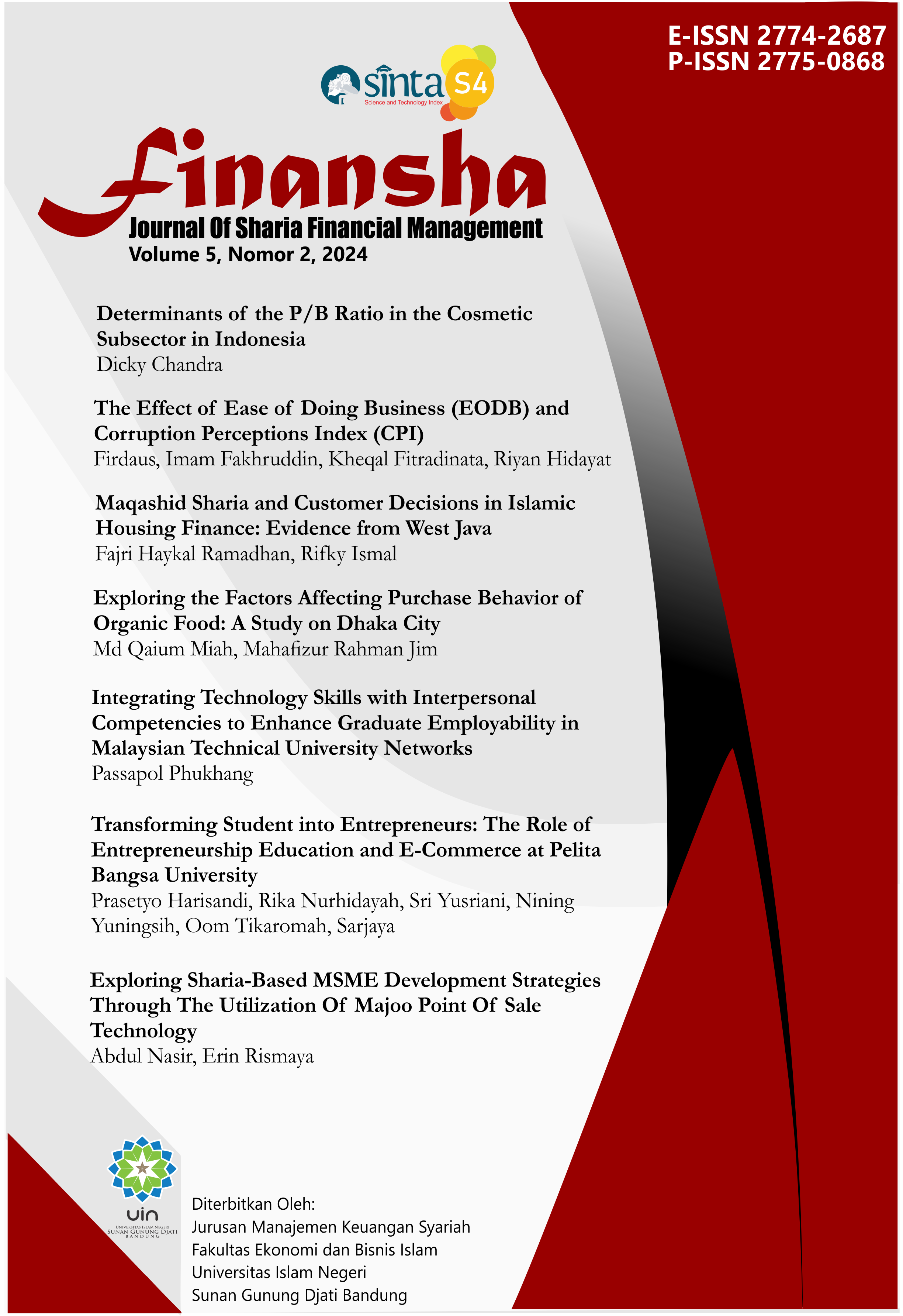MAQASHID SHARIA AND CUSTOMER DECISIONS IN ISLAMIC HOUSING FINANCE: EVIDENCE FROM WEST JAVA
DOI:
https://doi.org/10.15575/fjsfm.v5i2.38520Keywords:
Customer Decisions, Dharuriyat, Hajiat, Maqashid Sharia, TahsiniyatAbstract
The purpose of this study is to analyze Maqashid Sharia, specifically dharuriyat (necessities) proxied by service quality, hajiat (complementary needs) proxied by location, and tahsiniyat (embellishments) proxied by promotion, on customer decisions within the FLPP program in Islamic banking in West Java. This study adopts a quantitative research approach. Primary data were collected through a structured questionnaire, with the sampling technique employed being purposive sampling. The sample size consists of 100 customers of BJB Syariah and BTN Syariah involved in the FLPP (Housing Financing Liquidity Facility) program in West Java. Data analysis was conducted using Partial Least Squares-Structural Equation Modeling (PLS-SEM).The study concludes that the variables dharuriyat, hajiat, and tahsiniyat significantly influence customer decisions in the FLPP program, accounting for 75.5% of the decision-making process, categorized as strong. Among these, the dharuriyat variable, represented by service quality, has the highest impact, contributing 72.5%. The findings imply that customers' decisions to secure a home through the FLPP program are primarily driven by their housing needs rather than investment motives. In contrast, the tahsiniyat variable, represented by promotion, exhibits the lowest impact at 21%. This outcome indicates that tahsiniyat elements, which enhance the aesthetic and convenience aspects of life, are not critical to fulfilling essential or complementary needs (dharuriyat and hajiat). Thus, their absence does not pose significant difficulties or threats to these core elements.
Downloads
Published
2024-12-04
How to Cite
Ramadhan, F. H., & Ismal, R. (2024). MAQASHID SHARIA AND CUSTOMER DECISIONS IN ISLAMIC HOUSING FINANCE: EVIDENCE FROM WEST JAVA. Finansha: Journal of Sharia Financial Management, 5(2), 164–181. https://doi.org/10.15575/fjsfm.v5i2.38520
Issue
Section
Articles
Citation Check
License
Authors who publish with this journal agree to the following terms:
- Authors retain copyright and grant the journal right of first publication with the work simultaneously licensed under a Creative Commons Attribution License that allows others to share the work with an acknowledgment of the work's authorship and initial publication in this journal.
- Authors are able to enter into separate, additional contractual arrangements for the non-exclusive distribution of the journal's published version of the work (e.g., post it to an institutional repository or publish it in a book), with an acknowledgment of its initial publication in this journal.
- Authors are permitted and encouraged to post their work online (e.g., in institutional repositories or on their website) prior to and during the submission process, as it can lead to productive exchanges, as well as earlier and greater citation of published work (See The Effect of Open Access).

















